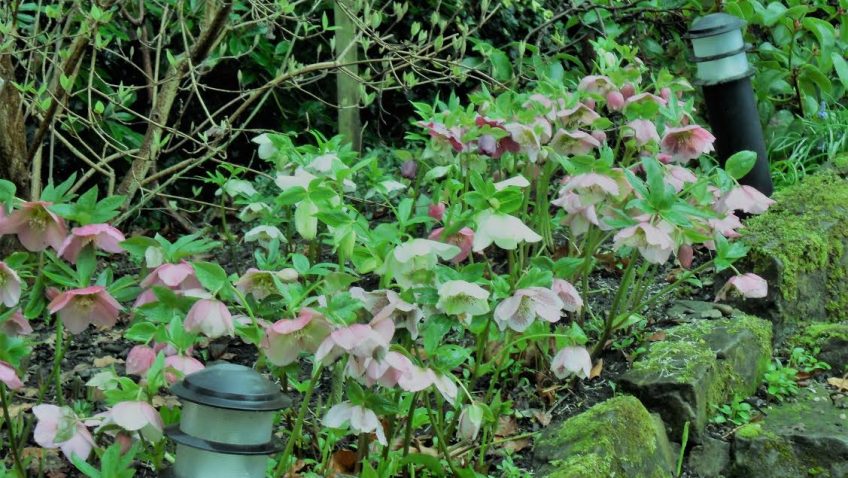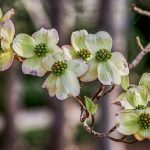Hello – I need to say welcome again to Green Arts it being quite some time since I was last in touch with Mature Times readers. Since working as a gardener I have come to enjoy the winter months much more than before. This surprises people who think I must be braving arctic temperatures for months on end. Not so. Because I am moving all the time and working on the outskirts of London I am not usually on very high ground or in exposed positions so I can honestly say I have never been cold when outside gardening. As for taking increased pleasure in the winter months I think this could well be precisely because I am outside in whatever limited daylight there is at this time of year.
I also now try to make an effort to enjoy the winter months – might as well, there are more of them. Whilst wondering recently if any literary souls had anything to say about winter that might strike a chord for me I did a bit of research and one commentator I especially liked said –
“The colour of springtime is in the flowers; the colour of winter is in the imagination.”
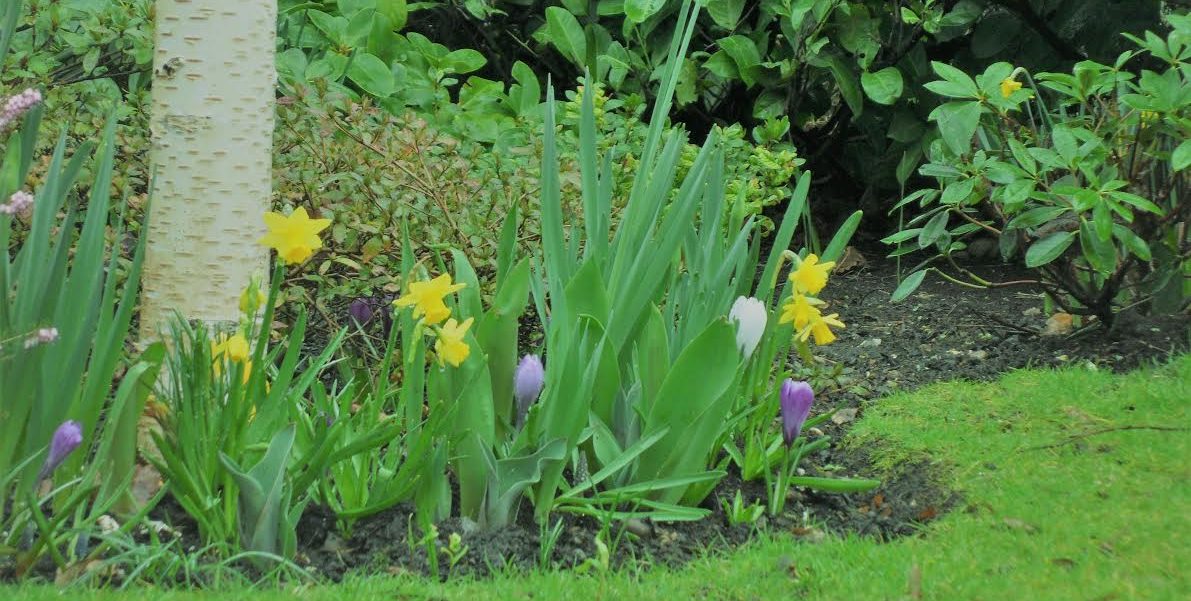
Bulbs at the foot of a well-scrubbed Silver Birch
Other writers referred to the winter season as being the bones or sinews of the garden compared with the flesh of spring and summer. As a gardener I find these ideas really resonate with me.
So, while in the spring and summer months it is easy to see nature at her best because she is, as it were, ‘in your face’ – all around us and hard to miss; during the cold, dark winter months there is still much to appreciate but this may happen in snatches – at different times of day, in limited spaces and it may be more about scent and shape than colour. We need to put all this together in our imaginations, and maybe later copy it into our gardens, and to enjoy it.
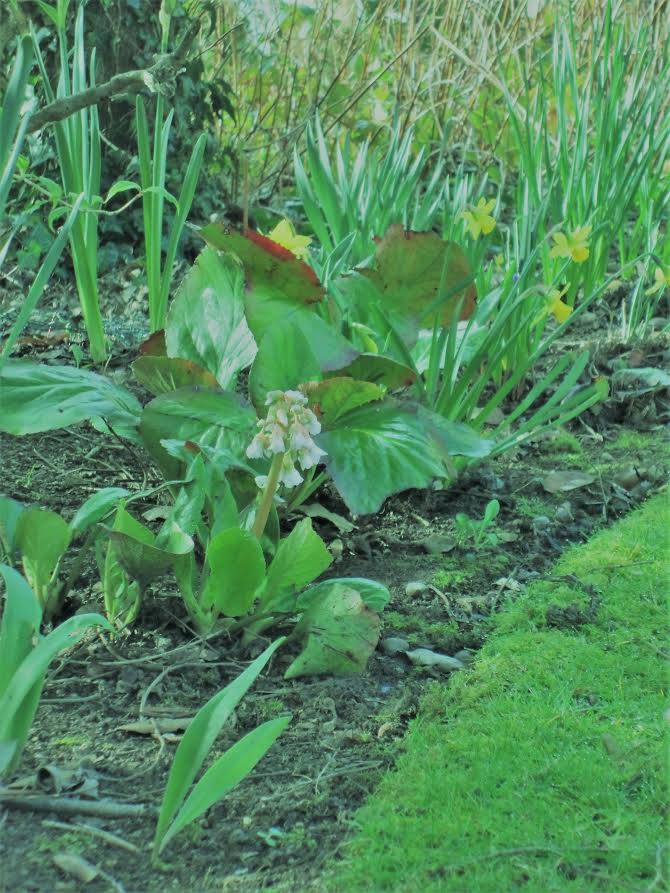
Bulbs in a woodland garden – a perfect pairing
Trees in blossom and bulbs in flower mean we can say ‘arriverderci’ (literally “until we see each other again”) to winter at least for a while. The worst is behind us. Bulbs seem to be very popular generally with most people and, since I am inevitably gardening on the heavy clay of the London basin, tough, hardy daffodils come into their own in this inhospitable soil as their sunshiney trumpets reliably reappear each year.
Bulbs are one of nature’s many solutions to difficult environmental conditions – she is absolutely brilliant at adaptability. Technically described as underground storage organs bulbs stay out of harm’s way until conditions provide the optimum time for a safe emergence and they make an appearance. Clever.
For some reason nearly all the professional gardeners I have known also tend to run an allotment plot. I am no different. You might think a complete change would be wanted when we aren’t actually working but it seems not. Maybe it is because growing fruit and vegetables is a different set of skills from amenity gardening or possibly it is because the delight of harvesting your own abundant and great tasting produce is addictive – I know not – but I do know I am hooked on my plot.
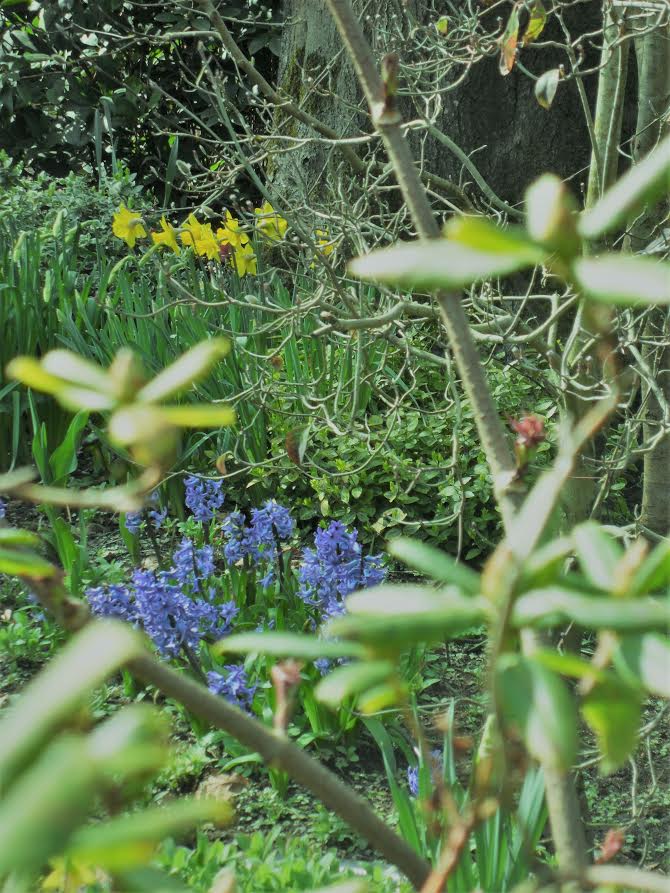
Bulbs in a woodland garden – a perfect pairing
I have to say that friends who grow a few vegetables in their gardens amongst the shrubs and flowers seem to get these sadly besieged by slugs and snails. Allotment sites, on the other hand, which as spaces may resemble aerodromes in their flatness and openness, avoid providing the hiding places for pests that the ornamental garden will. That isn’t to say that allotment sites are free of pest problems. Far from it. But they are designed to a purpose.
I chose this season to make a start with adopting a no-dig system on the plot. For many years the notion of not digging, given our heavy soil, did not appeal at all. I was also concerned at the sheer amount of material I would have to pile on top of the beds – where would I ever get enough?
I found inspiration in reading about two gardening methods not usually used in this country. The first, a concept from the US called lasagna gardening, strongly appeals to my current desire to create the truly fertile soil so necessary for vegetables. I garden on London clay. Anyone who is familiar with it will recognise a heavy soil that is not very easy to work and a million miles from the soft, crumbly loam we all want. But it is a worthwhile endeavour because this soil can be made excellent – with much work and copious amounts of additional material.
The real value of the lasagna method is that a bed can be created from scratch without any digging at all – on a piece of waste ground, on a lawn, anywhere you wish, and then can be planted up the following season. Anyone out there wishing to create an extra bed in a relatively easy way will find a great deal of information available on this system, usually coming from the US.
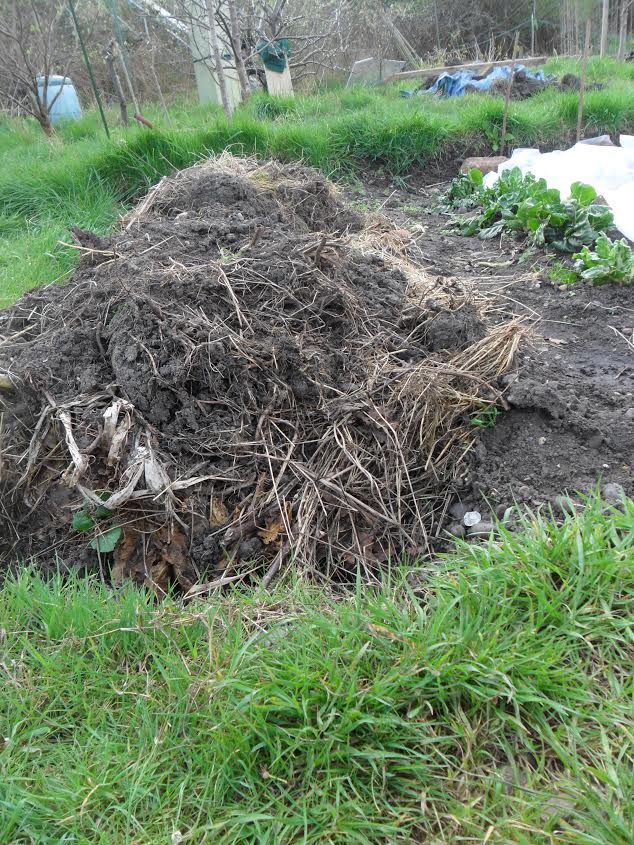
Half complete lasagna bed made up of cardboard, leaves, dried grass, kitchen waste and rotted down weeds
I am adapting the lasagna concept to create a raised bed into which I shall actually plant up this season with the greedy feeders like squash, courgettes and marrows. I shall then gradually give my entire plot over to raised beds made up of lasagna layers of carbon and nitrogen materials piled up to form beds with sloping sides.
The ideal, apparently, is to create the lasagna bed all at once. I have had to compromise and stagger it over two weeks. The picture shows a half-completed bed – what is needed now is to cover it with more layered sheets of cardboard and a covering of home-made compost.
The second horticulture method that caught my eye is the Chinese bed system. Small, narrow beds which are permanent and surrounded by paths means the soil of the beds is never walked on. A narrow trench designed to catch the run-off surrounds the beds and divides them from the paths. The beds have sloping slides and a flat top and, obviously, the flat top is narrower than the base. My present allotment labours are my mix of these two systems. I’ll make regular progress reports. At the time of writing I am still looking at the challenge of amassing large amounts of compost material.
It seems that the Chinese use the intensive bed method to grow vegetables in their cities in every available spare piece of soil – apparently even at a national monument. This sits very well with me as I am a great supporter of the notion that as city dwellers we need to do our bit with our horticultural contributions as countermeasures to an ever expanding built environment and to our threatened wildlife. The contributions of those of us living in cities may seem minor when compared to farms of massive acreage but then there are so many more of us.
So get started now with your own urban garden.
Until next time!
By Rosanna Cavallo

